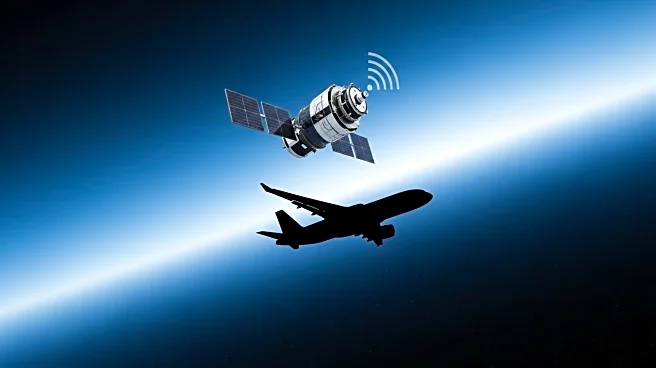What's Happening?
United Airlines has begun offering Starlink Wi-Fi on its mainline aircraft, expanding the service to cover flights within the U.S. and international routes to Canada and Mexico. This development follows
United's initial rollout of Starlink Wi-Fi on regional Embraer E175 jets earlier this year. The service was demonstrated on a flight from Chicago to Milwaukee, showcasing the enhanced connectivity that rivals home or office internet speeds. United plans to equip approximately 15 Boeing 737-800 planes per month with Starlink antennas, providing free access to MileagePlus members, while others can opt for paid subscriptions.
Why It's Important?
The introduction of Starlink Wi-Fi on United Airlines' mainline aircraft represents a significant advancement in in-flight connectivity, offering passengers internet speeds comparable to those experienced on the ground. This move positions United as a leader in airline technology, potentially attracting more tech-savvy travelers and enhancing customer satisfaction. The improved connectivity can facilitate business operations and entertainment during flights, making air travel more productive and enjoyable. Additionally, this initiative may set a new standard for in-flight internet services, prompting other airlines to adopt similar technologies.
What's Next?
United Airlines plans to continue outfitting its fleet with Starlink Wi-Fi, aiming to equip 15 Boeing 737-800 planes per month. As the service becomes more widespread, United may explore further enhancements to its in-flight offerings, potentially expanding the service to additional aircraft types and routes. The airline will likely monitor customer feedback and usage patterns to optimize the service and address any technical challenges. Other airlines may also consider adopting Starlink or similar technologies to remain competitive in the market.
Beyond the Headlines
The deployment of Starlink Wi-Fi on United Airlines' aircraft could have broader implications for the airline industry, including potential shifts in passenger expectations regarding in-flight connectivity. As high-speed internet becomes more common on flights, airlines may need to reassess their pricing models and service offerings to meet evolving customer demands. This technological advancement may also influence regulatory discussions around in-flight internet usage, particularly concerning video calls and other bandwidth-intensive activities.













